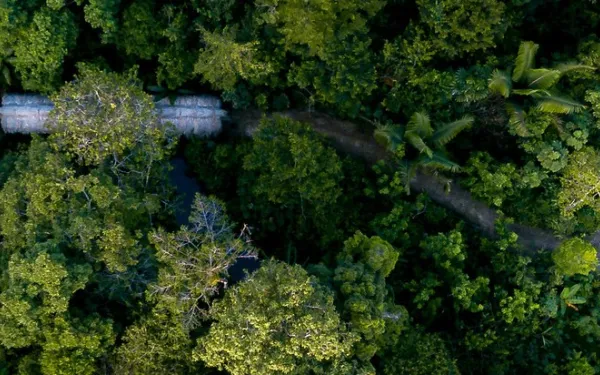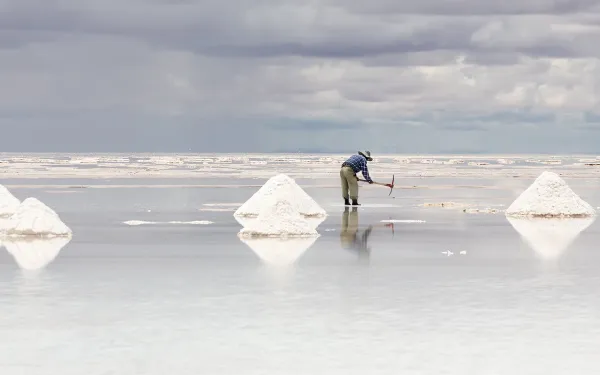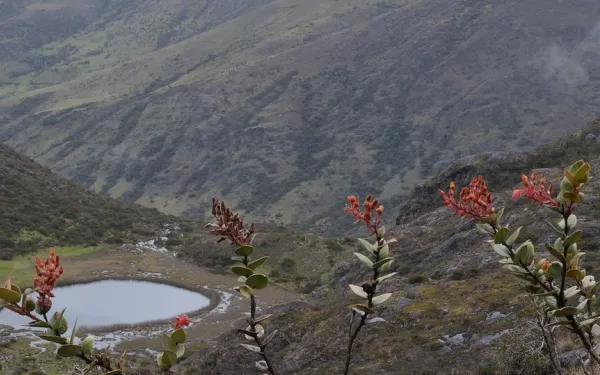
Project
Photo: Carlos AguileraProtecting the rich marine life of Cabo Pulmo Reef
Cabo Pulmo Reef, a 20,000-year-old ecological treasure in Baja California Sur, Mexico, hosts many of the 800 marine species in the Sea of Cortez.
Overfishing almost killed it in the 1980s. But the Mexican government intervened in 1995 to declare it a national park. Since then, the reef has grown, and the surrounding ecosystem has prospered.
Developers repeatedly try to build enormous tourist resorts at Cabo Pulmo. The proposed resorts typically include tens of thousands of hotel rooms, golf courses, an airport, sports clubs, and more—and require new housing development for thousands of employees.
Coral reefs like Cabo Pulmo are extremely vulnerable to the impacts of such poorly planned development. Sewage and wastewater runoff cause a surge in the growth of algae that blocks sunlight, causing the reef to bleach and die.
Fertilizers, herbicides, and pesticides from golf courses contaminate ocean currents and upset the delicate ecological balance of the area. Boating, fishing, and diving stress and break reefs, too.
In an area where water is scarce, tourism infrastructure projects could overexploit aquifers that are already suffering the impacts of climate change.
AIDA's work has been instrumental in ensuring the survival and health of Cabo Pulmo's ecosystems. We continue monitoring the situation and working with national partners to make legal protections for the reef stronger and permanent.
Partners:

Related projects

Closure and Responsible Exit
A requirement for environmental and climate justice in Latin America No natural resource (material or energy) extraction project lasts forever. Its useful life is subject to many variables, including endogenous factors -such as the amount of resource reserves or the extraction rate- and exogenous factors -such as decisions to address the climate crisis, the decrease in demand, financial problems, etc.- that condition the moment in which the project must close or the moment in which an actor in its value and supply chain must leave. Regardless of the length of the project's useful life or how it may be affected, a responsible closure process with the natural environment and society must be contemplated, which must be desired and promoted by all the stakeholders involved.This issue is even more relevant in the context of the climate crisis we are experiencing, which makes it urgent to implement measures to manage it in the short, medium and long term. Many of the actions required to meet greenhouse gas (GHG) mitigation targets are related to energy transition, which implies, in general terms, at least two things: 1) the substitution of fossil fuel extraction and use projects and 2) the promotion of low-emission renewable energies, which are associated with mineral extraction. In both scenarios, closure and exit issues are of great importance.In both extraction and generation projects, the role of their promoters, whether public or private, is essential. Likewise, the obligation of supervision and oversight of the States is very important for the protection and guarantee of the rights of those who may be affected. On occasions, the responsibility of the exit includes other key actors that are part of the value and supply chains of the projects: investors, insurers, distributors and buyers, among others.In Latin America, there have been important advances in regulating aspects related to the authorization, start-up and implementation of mining and energy projects. In these phases, environmental principles such as prevention and precaution, as well as rights such as prior consultation and free, prior and informed consent, and access rights, have played a crucial role in determining the viability and progress of projects, as well as in protecting and guaranteeing the rights of communities in the region. However, experience has shown that there are significant challenges for the closure and exit processes to be responsible with the ecosystems and communities involved. Indeed, the lack of a closure process, as well as the lack of clarity about the obligations surrounding the social transition processes and overcoming the conditions of economic dependence, are complex obstacles that can exacerbate environmental and social impacts. This report arises from the idea of proposing approaches based on law and science to address the closure and responsible exit of projects. To this end, we at the Interamerican Association for Environmental Defense (AIDA), in the period 2022-2024, interviewed various stakeholders1 and systematized 12 cases that exemplify the problematic situation of multiple fossil fuel extraction, mineral and power generation projects, which are in the closure phase or in exit processes in different countries of the region. These cases highlight the current challenges and legal, technical and administrative gaps regarding closure and exit in specific contexts.With this publication, we seek to provide answers to the following questions: what is meant by project closure and exit, what is the basis for closure and exit obligations under international law, what should closure and exit look like, who should be involved in these processes, and how should the social, environmental, economic and human rights challenges and impacts that arise from them be addressed? Read and download the report
Read more
Organizations and communities alert to human rights impacts of mineral extraction for the energy transition
A public hearing before the Inter-American Commission on Human Rights will focus on the impact of the expansion and intensification of extractive operations for transition minerals like lithium and copper on communities in Latin America. Washington DC. On November 15, at a public hearing before the Inter-American Commission on Human Rights, representatives of national and regional organizations, as well as members of communities and indigenous peoples, will present updated information on how the exponential increase in the demand for and extraction of transition minerals has caused serious human rights violations as part of a transition process that is proposed only as a change in the energy matrix and is incapable of addressing inequalities in energy production and consumption, particularly in the Global South.Transition minerals like lithium, copper, cadmium, and cobalt—also called “critical” minerals—have been proposed in many global discussions as one of the main solutions to the climate crisis, as they are used in the development of technologies for the production of renewable energy, thus reducing or replacing the use of fossil fuels. A large part of these minerals are located in Latin America, in areas of great biocultural diversity.At the hearing, participants will present the main threats that mining for energy transition poses to the rights of indigenous peoples and local communities, the right to a healthy environment, access to environmental information, citizen participation, and justice. In addition, concrete cases of human rights violations in the context of mining for energy transition will be presented through testimonies.These impacts are already occurring in countries such as Argentina, Bolivia and Chile, which concentrate about 53 percent of the world's known lithium deposits in their Andean wetlands, extremely fragile ecosystems confronting water scarcity; in Chile and Peru, where 40 percent of the world’s copper is mined; and in the Colombian Amazon, where concessions, mining claims and illegal extraction of transition minerals are violating the rights of indigenous peoples.Several international organizations have spoken out about human rights abuses related to climate crisis response, particularly energy transition processes. In September, the UN Panel on Critical Minerals for Energy Transition issued a set of recommendations and voluntary principles for governments, industry and other stakeholders to ensure equitable, fair and sustainable management of these minerals. These guidelines aim to ensure that the transition to renewable energy is based on fairness and equity, and that it promotes sustainable development, respect for people, and environmental protection in developing countries.The hearing will take place during the 191st period of sessions of the Inter-American Commission. It was requested by the Due Process of Law Foundation (DPLF), the Gaia Amazonas Foundation and the organizations that are members of the the Alliance for Andean Wetlands (Alianza por los Humedales Andinos): the Interamerican Association for Environmental Defense (AIDA), a regional organization; the Fundación Ambiente y Recursos Naturales (FARN) and the PUCARÁ Assembly, of Argentina; the Centro de Documentación e Información Bolivia (CEDIB) and the Colectivo de Derechos Humanos Empodérate, of Bolivia; ONG FIMA, Defensa Ambiental and Fundación Tantí, of Chile.The hearing will be held from 9:00 a.m. to 10:30 a.m. (Washington DC time) and will be broadcast via Zoom, which requires prior registration at the following link: https://www.zoomgov.com/webinar/register/WN_dsEZdrDqSyOA8-i7ikveJQ#/registration. Quotes from representatives of organizations and communities Verónica Chávez, representative of the communities of Salinas Grandes and Laguna de Guayatayoc, Argentina:"All of us who are part of the Salinas Grande watershed are living a situation in which our rights are being affected. We hope that the IACHR can resolve this situation because it is very serious; they are damaging our territories, living beings, and nature itself." Liliana Ávila, director of the Human Rights and Environment Program at the Interamerican Association for Environmental Defense (AIDA):"The energy transition in our countries should be an opportunity to move towards more just and equitable energy production and distribution processes. The human rights framework and the role of the international protection system are fundamental in this regard. It is very important that the Inter-American Commission closely follows this process and promotes the protection of human rights." Verónica Gostissa, attorney with Asamblea Pucará of Catamarca, Argentina:"In our territory, the province of Catamarca, Argentina, we are living a serious violation of our rights, which is reflected first and foremost in the visible environmental impacts. Since 1997, lithium mining has caused significant environmental damage, including the drying up of a branch of the Trapiche River, a damage that persists to this day. Water continues to be taken from this damaged river, despite recognition of the damage by the company and government authorities. Access to public information, participation and consultation, and access to justice are also affected. For years, extractive projects have been approved without adequate procedures, and although a lawsuit filed by the Atacameños del Altiplano indigenous community resulted in a regulation, it does not meet the standards for effective indigenous consultation. In addition, more than 10 lithium projects are being developed in the same territory, the Salar del Hombre Muerto, without any cumulative and comprehensive impact assessment to date." Vivian Lagrava Flores, coordinator of the Colectivo de Derechos Humanos Empodérate, Bolivia:"Indigenous communities reject mining projects, they can even issue their resolutions and say no in the mining consultation process, but their decisions are not binding for governments. International standards are not respected, and the subjugation of territories and the imposition of mining rights are legitimized with discourses of progress and development, but it is not development from the vision of the indigenous peoples, nor from ours." Lady Sandón, representative of the Environment Unit of the Consejo de Pueblos Atacameños, Chile:"There is a lot of ignorance of the law for the native/indigenous people, which favors the state, and that is why the inhabitants of the land, by not knowing, do not enforce their guarantees. The state institutions violate the social, environmental, and cultural aspects; sometimes they use the indigenous people themselves to create divisions and to have supporters or political and mining operators who promote the change of the thinking of the genetic memory that we have as native people. I hope that we can revisit the situation of ancestral indigenous justice as a mechanism that previously established corrections so that the values and principles of ‘Buen Vivir’ are respected." Daniel Cerqueira, program director of the Due Process of Law Foundation (DPLF):"This hearing is an opportunity for the Inter-American Commission to clarify the parameters of action for both States and companies in the management of transition minerals. It is imperative to have specific obligations in this area, as human rights violations resulting from the extraction of these minerals are a reality that tends to worsen in several countries in the region." Juan Sebastian Anaya, advocacy advisor at the Gaia Amazonas Foundation (Colombia):"The indigenous governments of the Amazon exercise their territorial and environmental authority in accordance with the Law of Origin, which guides their knowledge systems and principles of relationship with the elements of the territory, such as minerals. The decarbonization of the energy matrix to maintain consumption standards in the global north should not be done at the expense of indigenous territories and the communities that protect them, govern them and make them flourish with their daily practices."Press contactsVíctor Quintanilla (Mexico), AIDA, [email protected], +52 5570522107Rocío Wischñevsky (Argentina), FARN, [email protected], +54 91159518538 Karen Arita (Mexico), DPLF, [email protected], +52 442 471 9626
Read more
Declaration for the protection of the páramos and montane forests of the Tropical Andes
The undersigned civil society organizations, gathered in the framework of the 16th meeting of the Conference of the Parties (COP16) to the Convention on Biological Diversity (CBD) in Cali, Colombia: 1.URGE States Parties to the CBD to adopt domestic regulations and make international commitments to:recognize the crucial role of the páramos and the montane forest that protects them in global water regulation, mitigation and adaptation to the climate crisis, as well as in the conservation of biocultural diversity;protect the human rights, traditional knowledge and sustainable practices of indigenous peoples and peasant and traditional communities that inhabit the páramos and montane forest; andprohibit large-scale mining or similar practices in paramos and montane forests in terms of their socio-environmental impacts, in accordance with the principles of precaution and prevention. 2. REQUEST the States to include in their national biodiversity strategies and action plans indicators and monitoring mechanisms before the CBD that allow them to adequately measure and report compliance with the commitments they assume to advance in the conservation of these ecosystems under the terms of this declaration, as well as to guarantee the rights of the peoples and communities that inhabit them. 3. REQUIRE States and multilateral financial institutions to mobilize sufficient resources and technical capacities to guarantee the conservation of these ecosystems, as well as the protection of the indigenous peoples and peasant and traditional communities that inhabit them. We submit these requests to the States Parties to the CBD: Taking into account that there is a scientific consensus on the water regulatory power of the páramo and montane forest ecosystems[1] because they not only host endemic flora that captures freshwater from rain and fog, supplying it to the Andean cities located downstream; but also soils, lake and peatland systems that have a high concentration of organic matter and an enormous capacity to retain the liquid. In addition, the páramos wetlands are high Andean wetlands[2] under the protection of the Ramsar Convention on Wetlands of International Importance.Recognizing that páramos and their montane forests are fundamental in the carbon cycle; that due to low temperatures and the slow rate of decomposition of organic matter present in them, their soils, vegetation and wetlands capture and retain carbon dioxide (CO2)[3], contributing to climate change mitigation and adaptation and reducing the impact of meteorological events; and that these ecosystems are carbon sinks under the terms of the United Nations Framework Convention on Climate Change (UNFCCC).Reminding that, due to their biological and climatic characteristics, these ecosystems provide essential services for the population and contain biodiversity that is subject to special protection[4] and are home to endemic and native species of flora and fauna such as frailejones, pajonales, epiphytes, the chivito hummingbird, the Andean condor and the Andean bear, among others.Considering that the indigenous peoples and peasant and traditional communities of the region manage and protect the páramos and montane forests, ensure the preservation of common goods in their territories and are guardians of ancestral knowledge that is crucial for the conservation of biodiversity; that the integrity of the páramos is fundamental for the conservation of these ancestral practicess[5]; and that the páramos and montane forests are reserves of biocultural diversity within the framework of the CBD.Reiterating that the Intergovernmental Panel on Climate Change (IPCC)[6] warned of the impact of the climate crisis on páramos; and that they face other anthropogenic pressures such as fires, monocultures, livestock and invasive species[7].Warning that despite being strategic and sensitive ecosystems, deserving of the greatest protection, some of them are currently under strong pressure to develop large-scale mining projects, while others are at risk of being subject to mining concessions due to non-compliance with regulations and public policies that protect them or the lack of them.Bearing in mind that indigenous peoples and peasant and traditional communities have rejected these mining projects in their territories, even winning by majority vote "popular consultations" with which they have succeeded in defending the use of the land for traditional activities in their territories.Insisting that the removal of vegetation cover and the fragmentation of ecosystems generated by large-scale mining can affect the ecological balance, biocultural diversity and the provision of ecosystem services essential for life; acidify and reduce the amount of freshwater available for life systems; and break ecological and spiritual interconnectivity with other biomes and ecosystems, ending their capacity to capture carbon[8] and causing impacts in perpetuity.Following the warnings made by several UN rapporteurs and working groups on the negative impacts of mining on the environment and on human rights[9].Warning about certain dynamics recently employed by some mining companies in the countries of the region, particularly multinationals -such as the splitting of large mining titles, the change of exploitation method from surface to underground mining, as well as the formalization of small-scale miners in the area to outsource their activities by requesting multiple smaller areas-, which threaten to disguise large-scale mining processes with cumulative and synergistic environmental impacts on páramo ecosystems and montane forests that can be equal or more serious than those of a large-scale mining concession.Recalling that under the CBD States are required to: (i) monitor activities that have or are likely to have significant adverse effects on the conservation and sustainable use of biological diversity[10], such as mining; (ii) establish protected areas for biodiversity conservation[11] based on the traditional knowledge of indigenous peoples and peasant and traditional communities[12]; and (iii) adopt emergency measures when there are serious and imminent risks to biological diversity from natural or other events[13], such as risk from extractive activities. Signed byCentro Sociojurídico para la Defensa Territorial Siembra (Colombia)Colectivo Socio-Ambiental Juvenil de Cajamarca COSAJUCA (Colombia)Comité para la Defensa del Agua y el Páramo de Santurbán (Colombia)Consejo Territorial de Cabildos de la Sierra Nevada de Gonawindua CTC (Colombia)Corporación Ecológica y Cultural Penca de Sábila (Colombia)Movimiento Socioambiental Kumanday (Colombia)Natural Seeds Alliance (Colombia)Proyecto Dulcepamba (Ecuador)Acción Ecológica (Ecuador)Latinoamérica Sustentable (Ecuador)Unión de Defensores del Agua - UNAGUA (Ecuador)Federación de Organizaciones Indígenas y Campesinas del Azuay - FOA (Ecuador)Alianza de Organizaciones por los Derechos Humanos del Ecuador (Ecuador)Legal Defense Institute - IDL (Peru)Red Muqui (Perú)Red Internacional de Forestería Análoga - RIFA (Costa Rica)Mining Watch Canadá (Canada)Both ENDS (Netherlands)Redes del Agua Latinoamérica (Regional)Interamerican Association for Environmental Defense - AIDA (Regional)[1]Buytaert W. et al. Hidrología del páramo andino: propiedades, importancia y vulnerabilidad. Lovaina, U. de Lovaina, s.f.,, p. 10, 11, 23.[2] COP del Convenio de Ramsar, Resolución VIII.39. Los humedales altoandinos como sistemas estratégicos. Valencia, 2002.[3] Robert Hofstede et al. “Los páramos del Ecuador: Pasado, presente y futuro”, capítulo 12, págs 328 – 330, 2023[4] Robert Hofstede et al. págs 158 – 163, 2023.[5] IPBES (2018). The IPBES Regional Assessment Report on Biodiversity and Ecosystem Services for the Americas. Recuperado de: https://www.ipbes.net/assessment-reports/americas[6] IPCC (2013). Panel Intergubernamental de Cambio Climático, Quinto Informe de Evaluación, Recuperado de: http://www.ipcc.ch/home_languages_main_spanish.shtml[7] Ochoa-Tocachi et al., 2016, Tomado de IPBES (2018).[8] Madriñán, S., Cortés, A. J., & Richardson, J. E. (2013). Páramo is the world's fastest evolving and coolest biodiversity hotspot. Frontiers in genetics, 192.[9] Asamble General de la ONU, (i) Relatoría Especial sobre derechos humanos y sustancias y desechos peligrosos. Asamblea General de la ONU. A/HRC/51/35, 8 de julio de 2022, (ii) Relatoría Especial sobre el derecho humano a un medio ambiente limpio, saludable y sostenible. A/79/270, 2 de agosto de 2024, (iii) Grupo de Trabajo sobre la cuestión de los derechos humanos y las empresas transnacionales. Asamblea General de la ONU. A/78/155, 11 de julio de 2023.[10] Convenio sobre la Diversidad Biológica, Art. 7.C.[11] Ibid. Art. 8.C. CDB.[12] Ibid. Art. 8.J CDB.[13] Ibid. Art. 14.E. CDB.
Read more